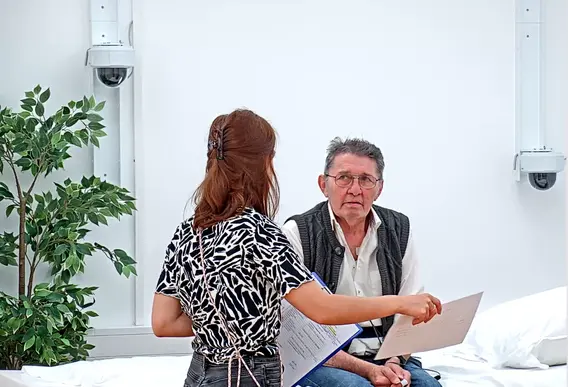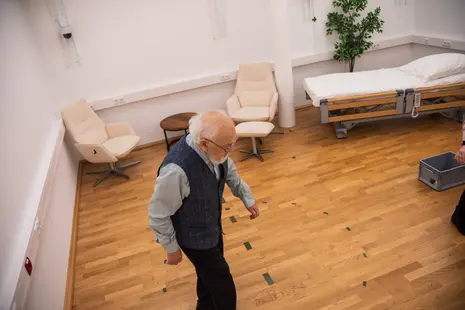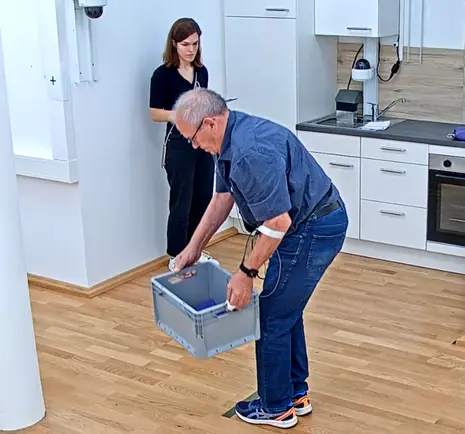Research
The clinical problem and the scientific solution
The clinical problem
People with dementia increasingly suffer from a variety of psychological problems as the disease progresses. This includes not only what are known as cognitive deficits, such as limitations in memory, attention and thinking, but also changes in experiencing and behaviour, such as anxiety, depression, sleep disorders, and agitation. These are called the “Behavioural and Psychological Symptoms of Dementia” (BPSD) and they are often more disabling and distressing than the cognitive impairments for those affected and their relatives. It is difficult to identify the causes of BPSD because they can be a direct result of dementia or caused by separate problems. A clinically relevant example of this is agitation, which is a direct symptom of dementia but can also be triggered by severe anxiety and pain. However, the strategies for successfully treating agitation vary greatly depending on the cause.
The scientific solution offered by BamLiD
To continue with the example just mentioned, we must therefore learn to recognise the difference between agitation as a direct consequence of dementia and agitation triggered by, for example, a headache or toothache. This means that we need to examine older people using low-stress methods in realistic everyday environments during activities that trigger conditions or emotions such as pain, fear or anger, and search for the subtlest signs of these states. Important, but sometimes weak and fleeting signs, may include facial expressions, changes in posture, vocalisations such as muttering and moaning, and fluctuations in the(?) heart rate. At BamLiD, we can measure all these signs by using a multisensory approach in realistic contexts and find out which changes are reliable indicators of pain, fear, and anger, for example. In cooperation with University of Bamberg computer scientists, we can integrate the enormous data streams that are generated in the process and evaluate them for their potential to discover such inner states.
The everyday tasks that can be carried out in BamLiD include:






